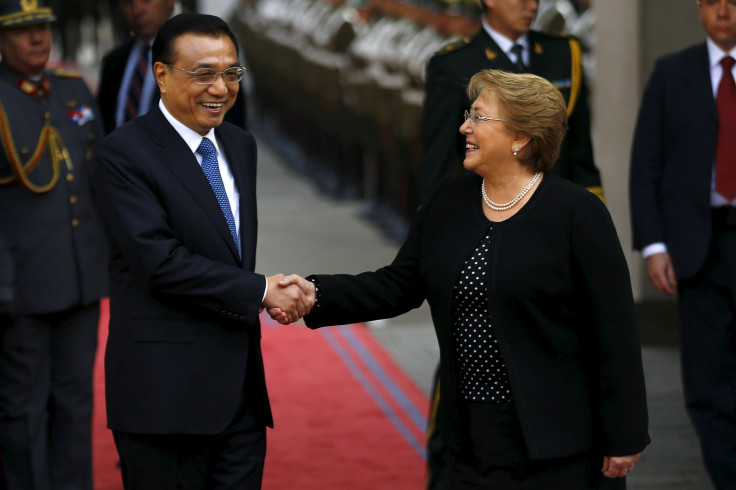Chinese Premier Wraps Up Latin America Trip As UN Warns Of Trade Slowdown

Chinese Premier Li Keqiang returned to Beijing Tuesday, after signing a fresh batch of financial accords during his weeklong tour through four Latin American countries. But while the trip underscored the growing love affair between China and Latin America, trade will likely grow at a slower pace in the coming years, according to a new United Nations economic report.
Li wrapped up his eight-day trip through Latin America Monday, after pledging a $30 billion fund for industrial cooperation and signing a slew of deals promising Chinese investment in mining, energy and infrastructure projects in Brazil, Chile, Colombia and Peru. Li’s visit also pushed forward an ambitious $10 billion transcontinental railway project stretching between Brazil and Peru. Brazil, Peru and China agreed to start feasibility studies on the project, which has already generated some controversy among environmental and human rights groups.
Li’s Latin America tour highlighted China’s deepening relationship with the region, which has resulted in around $119 billion worth of Chinese investments and loans over the past decade, according to the Inter-American Dialogue and Boston University’s China-Latin America Finance Database. But the U.N. Economic Commission for Latin America and the Caribbean (ECLAC) issued a new report Monday warning that economic slowdowns in China and Latin American countries could also spell slower growth in bilateral trade as well.
Bilateral trade has already declined slightly in 2014, down to $269 billion from its all-time high of $274 billion in 2013, the report noted. Over the past decade, China has relied on Latin America’s commodity boom, importing products like iron ore and soybeans to feed China’s resource-scarce markets. But falling commodity prices and declining demand for raw materials in China have changed the game.
Mexico’s trade deficit with China largely drove that decline, according to the ECLAC, but it still predicts that trade will cool in the coming years. “Given the slower pace of growth forecast for the next few years, both in China and Latin America and the Caribbean, bilateral trade is unlikely to expand at the pace seen in the last decade and a half,” the report said.
According to the commission, export diversification will be the key to keeping trade robust. In 2013, just five commodities -- iron ore, oil, soybeans, copper ore and refined copper -- made up 75 percent of China’s trade with the region, researchers wrote.
“If Chinese investment flows grow and diversify, this could not only drastically redefine the economic-trade relationship between both parties but could also promote productive integration within the region itself,” the report said.
© Copyright IBTimes 2024. All rights reserved.






















